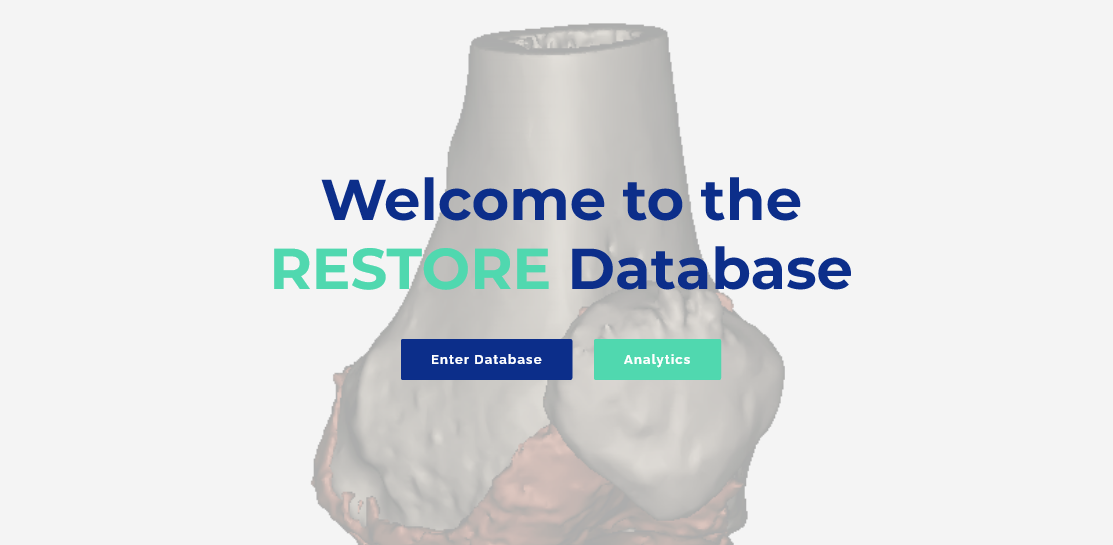The final version of the RESTORE database, developed by the RU team, is now available online at https://restore-project.ru.is/. This database serves as a repository of patient-specific anatomical models of knee anatomy, including various chondral lesions. With over a hundred different measurements derived from 47 individuals (25 females, 22 males), the database is categorized into three groups: degenerative (24 individuals), traumatic (15 individuals), and healthy control (8 individuals). The degenerative category consists of patients with osteoarthritis or undergoing total knee prosthesis replacement, while the traumatic category comprises individuals with acute injuries. The healthy control group consists of individuals with no previous trauma or pain and serves as a reference.
Each patient entry in the database includes information such as age, knee laterality (left or right), and sex. Both 2D and 3D measurements can be visualized for each patient. The 2D measurements involve radiological parameters observed from CT, MRI, and X-ray images. The 3D measurements include cartilage and bone density, derived from the reconstruction of a 3D knee model. This reconstruction process involves merging the segmented cartilages from MRI scans with the segmented bones from CT scans (registration process). Additionally, the 3D section allows users to view a video representation of the reconstructed knee.
The RESTORE database not only provides access to individual patient data but also offers cohort data in the analytics section. Users can explore analyzed results within different compartments of the knee, utilizing various measurements obtained from X-rays, CT images, MRIs, and 3D reconstructions.
Furthermore, the RESTORE database allows the downloading of 3D models (STL files) as well as the gray values of femoral, tibial, and patellar cartilages and bones from the dedicated download section.
The RESTORE database is freely accessible and offers a unique collection of morphological measurements related to bone and cartilage tissues. As of now, the database is being consulted by students, researchers and developers from universities and bioengineering companies. The RU teams is in contact with Brinter 3D bioprinting company and the University of North Carolina, computer science department, planning joint research activities based on RESTORE database information.


